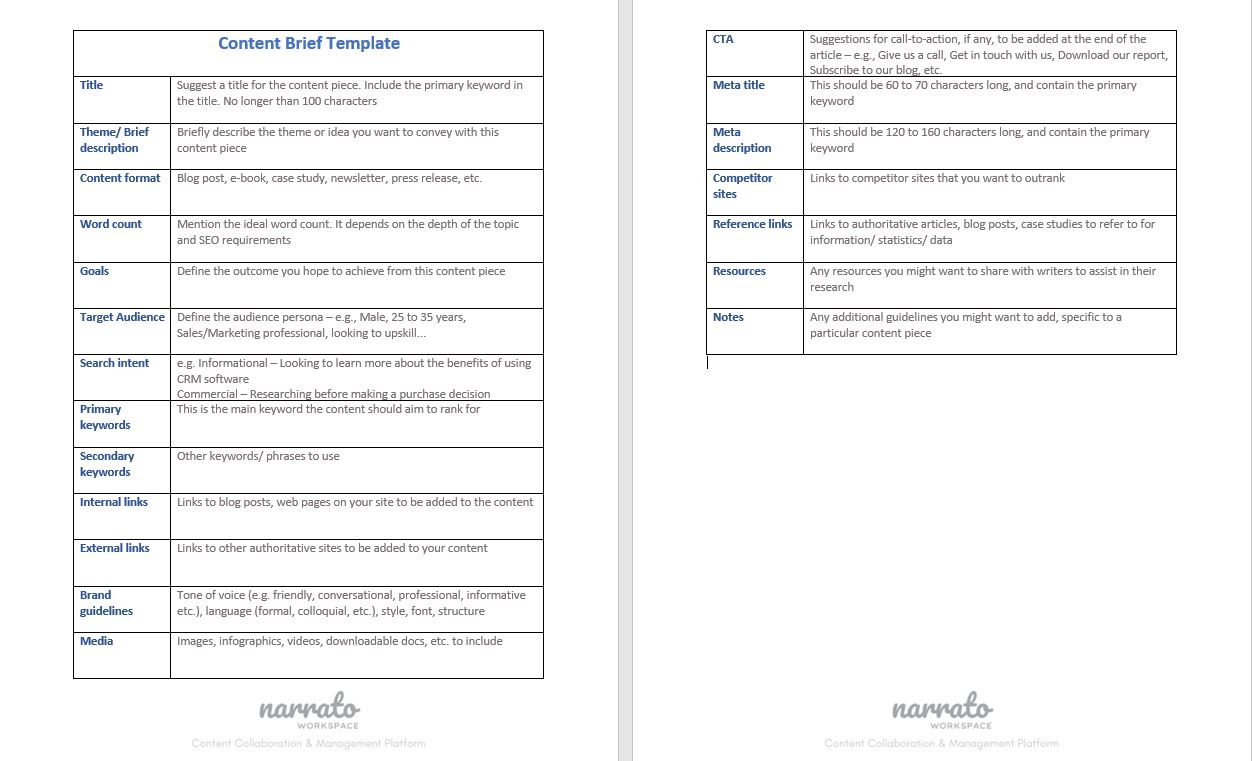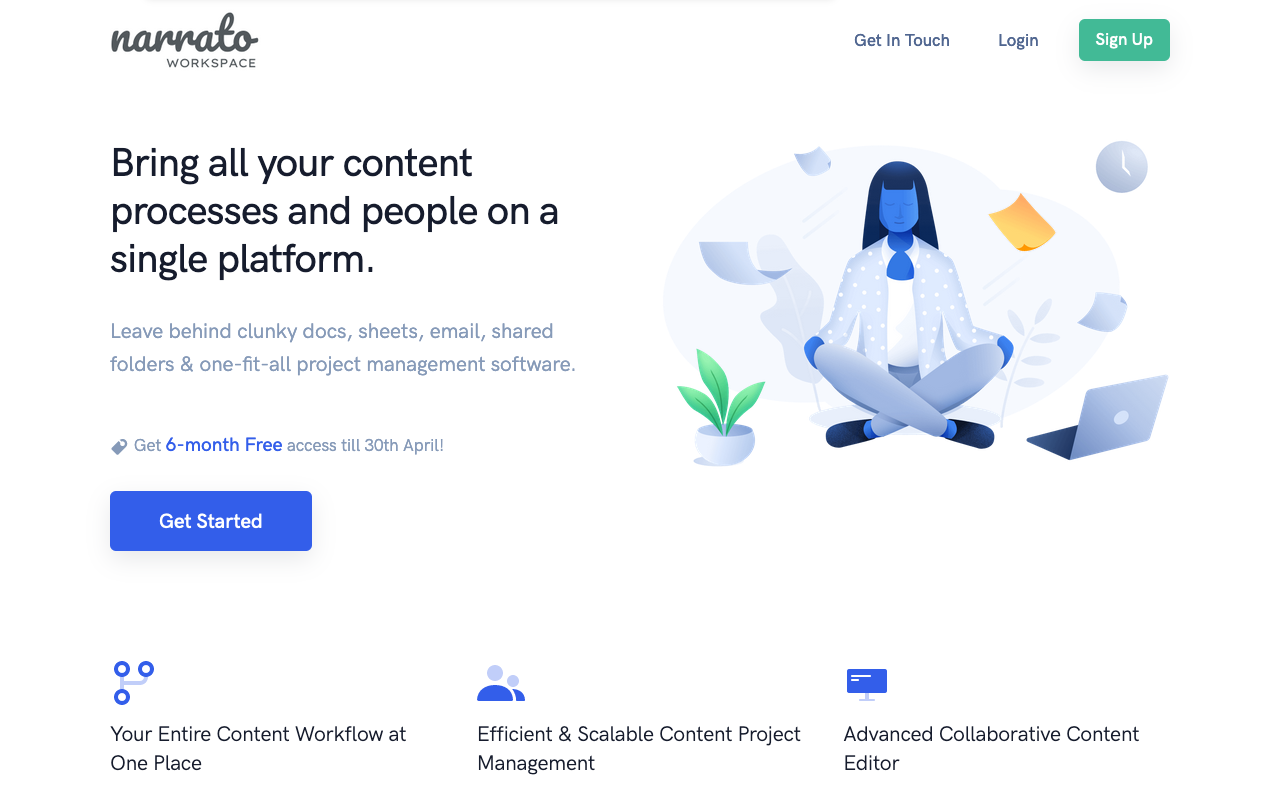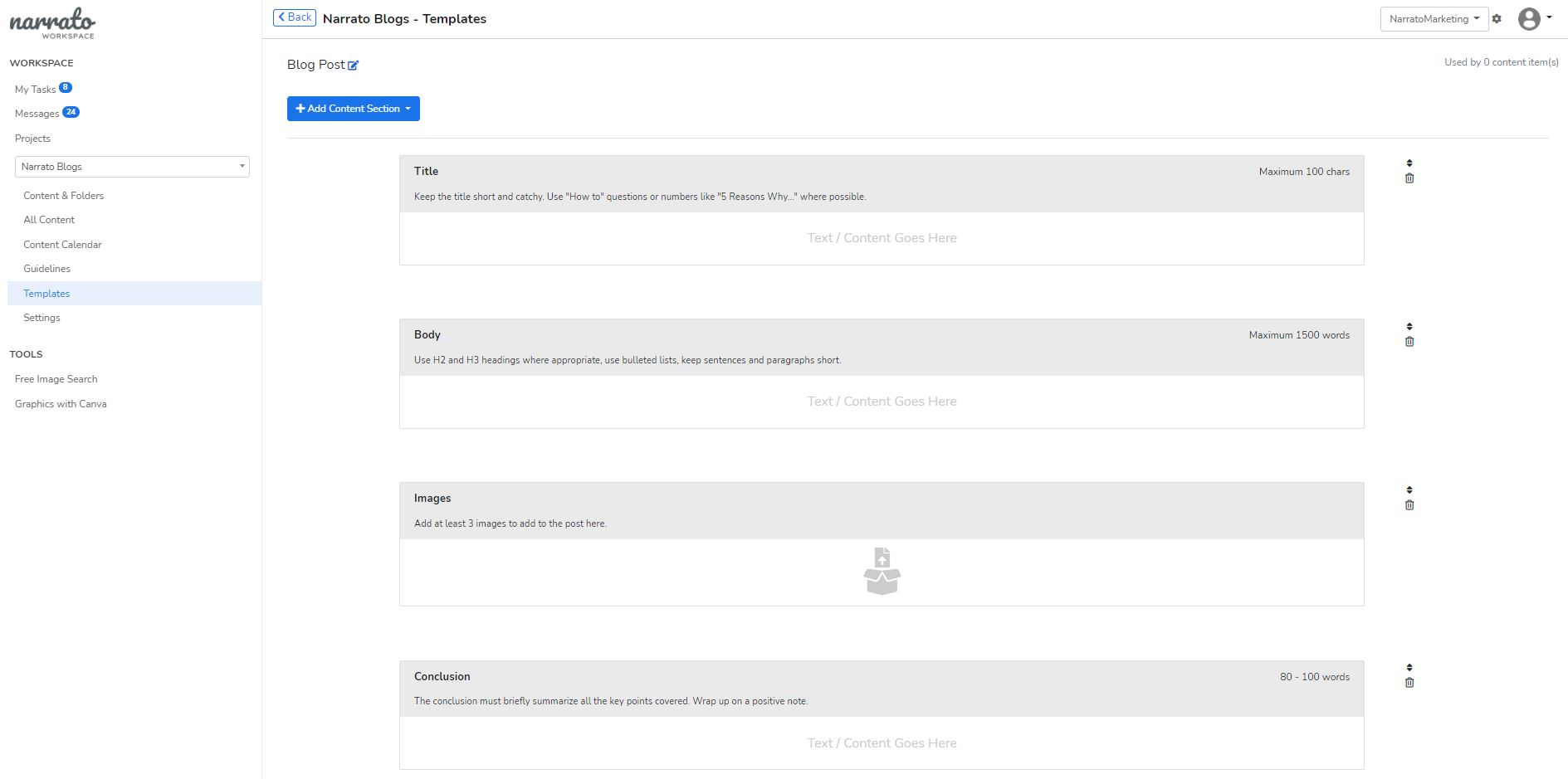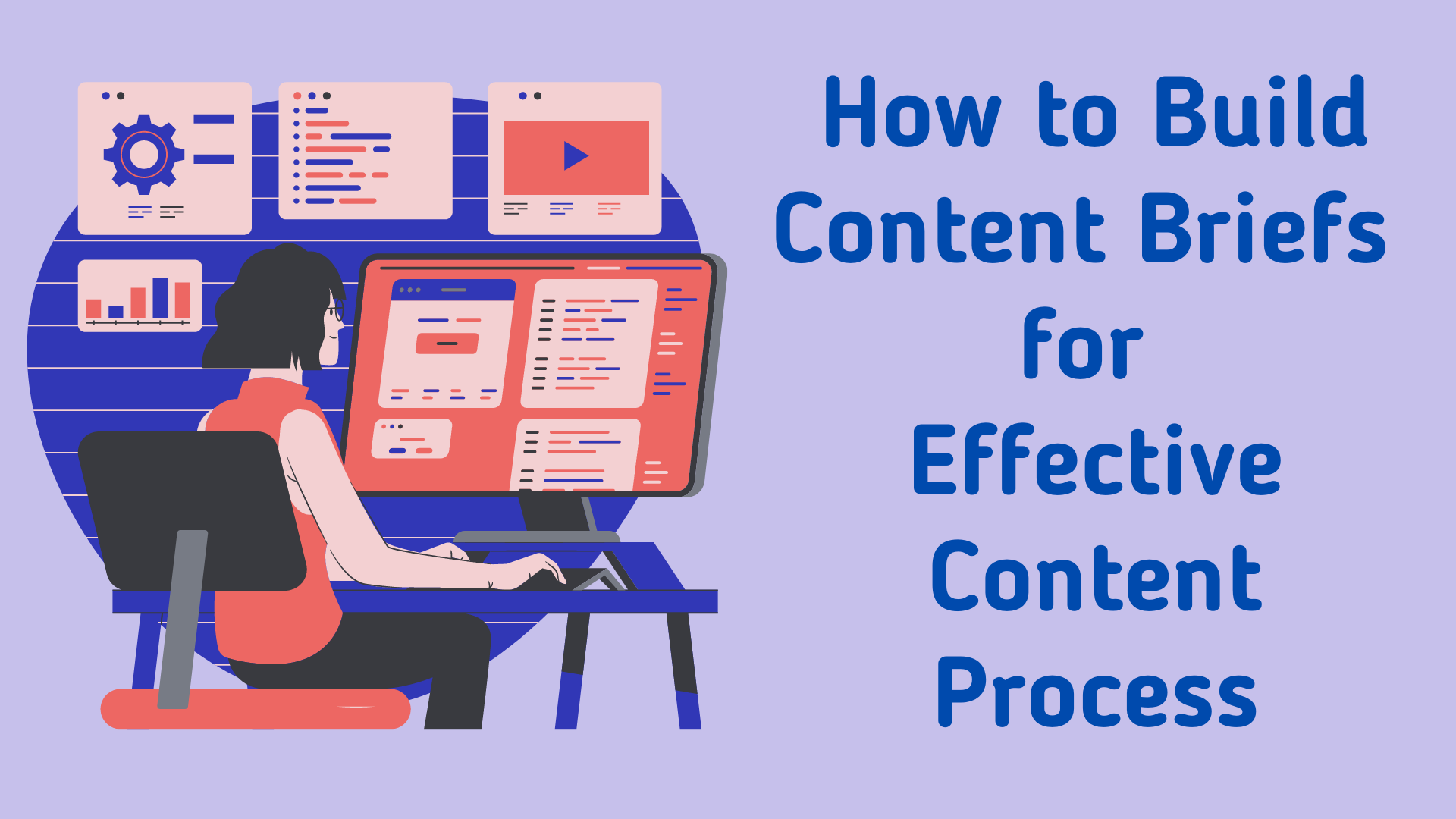Like most other things in life, starting out is usually the toughest part of the content creation process too. If you want your content creators to really deliver content that packs a punch, the first thing they will need is a solid content brief. You have some ideas of what your content should read and look like. Conveying those ideas to your writers and ensuring the end result is as good as you imagined can be an uphill battle. Even the best content writers on your team may not be able to deliver a great piece without an effective content brief.
As an editor or a client, creating a comprehensive content outline that serves as a solid base for content creators is your very first task in the content process. But what makes a good content brief after all? How do you create a content brief template that works every time? Do you need a content brief generator to simplify the process? We’ll delve deeper into all of this, but first, let’s get to the basics.
Why do you need to create content briefs?
What to include in a good content brief?
How to create a content brief for writers?
Content brief tools for creating effective content outlines
What is a content brief?
A content brief is a content outline or a set of instructions that cover all the information a content writer would need to create a high-quality piece. You can create a brief for all kinds of content, be it a blog post, an e-book, a video, a podcast, or something else you wish to create. For other content formats, though, it is usually called a creative brief while a content brief is specific to written content in most cases. The content brief conveys your content strategy and the editorial instructions to the writer.
A well-written content brief usually contains every important aspect that the content creator must focus on. It could include the topics to be covered, the length you’re aiming for, the content SEO requirements, brand guidelines, and more.
Every business has different needs and goals when it comes to content creation and so the content writing brief template will also vary from one company to another. But there are some key elements of a good content outline that are common to all and must be included to give the writers clarity and direction.
Why do you need to create content briefs?
The content brief is a base that you create for the writers helping them understand exactly what you want. A well-written content creation brief can –
- Help writers create a content piece that is on point and requires very little editing later, saving you time and effort.
- Puts your writers at ease as they are more aware of your expectations.
- Reduce the chances of miscommunications and unnecessary back and forth that the content creation process often witnesses.
- Align writers with your content goals and streamline the content workflow, especially when working with a large team of writers.
- Connect your content strategy, SEO strategy, and content creation to deliver maximum impact.
Similarly, a creative brief gives your team the direction you want to take with the content piece. This is also where you specify the content creation tools, video editing apps, and other tools they can use to simplify the process.
If you are briefing your writers verbally or sharing instructions in an unorganized manner, it is likely that they may miss out on important points or lose track of things mid-way.
A content brief, being a documented content outline, serves as a solid reference and makes sure writers follow important instructions to the T.
What to include in a good content brief?
Irrespective of what approach you take to content creation, these key elements of a good content creation brief are a must-have for everyone.
Content goals
When you are content, you have a vision of your own. Every piece of content must have its own short-term and long-term goals. The content brief must tell your writers what those goals are. If you are creating a sales copy, your content goals will most likely be to drive conversions and increase sales. If it’s a blog post you’re creating, the goal is usually to engage readers and get them to subscribe to your blog.
Your writers must know what they should aim to achieve with the content they write. Each different goal demands a different approach.
Target audience
Your target audience defines who you are creating content for. Depending on the audience persona you are targeting, the writers have to adjust their tone, language and style of writing. Knowing the target audience tells the writer how much the reader may already know about a topic and whether the content piece needs to be simple or more technical.
It is also a good idea to specify the audience’s pain points, concerns, interests, and search intent. This helps writers align their content to what the reader is looking for.
Topic / Main theme
Writers need to know the main theme of the content piece they are creating. Give them the topic or theme on which you want the content to focus. You can give them the liberty to tweak the title of the post a little if that makes it sound better or helps with content SEO. But specifying the topic in the content creation brief ensures that they don’t deviate from the theme.
Brand guidelines
Every piece of content you create should align with your brand’s tone and voice. Older writers should be familiar with it now, but new writers or freelancers on your team must know what the brand guidelines are. Specify whether your brand image is casual and friendly or formal and informative. Writers must know whether it is okay to add humor, be conversational or just stick to a professional tone.
SEO guidelines
The content brief should also include what you’re looking for in terms of SEO. There may be specific keywords that you want to target, a certain length, or link placements that you want to achieve. The content writer must be aware of this because your SEO best practices are what will determine your search rankings and make your content more visible in search results.
You can, in fact, create a separate SEO content brief by itself that discusses all the SEO requirements in detail. We’ll go deeper into this in the following sections.
Images/ visuals to add
If you prefer adding images or graphics within your written content, your content creation brief must mention that as well. Tell your writers what kind of images, videos, or graphics to add. You can also specify where you want them to source the images from, whether they should be stock images or screenshots of a webpage or custom-made infographics. Mention how many visuals you want within the article and where they should be placed, if you have any such specific requirements.
Calls-to-action
Certain kinds of content may need to include a call-to-action. Particularly if you’re looking to promote a business or trying to drive conversions with your content, a call-to-action is a must. You may want to lead the audience to a product page on an e-commerce site or get them to download an e-book. Define this clearly in the content outline and tell your writers what the CTA should look like. Also, tell them what it should link to and on what anchor text.
Deadlines
Every content brief should include a deadline. This may be often neglected but it is very important to let your writers know when you expect the piece to be delivered. The deadline that you add must be realistic and achievable, though, based on the writer’s expertise and experience.
Make sure to set the deadline a little ahead of when you plan to deliver or publish the content, so you have enough time to review and edit.
How to create a content brief for writers?
Knowing how to write a good content brief is just as important as creating good content. You need to be concise while also including all the information a writer may need. If you make it too short, you may be leaving out something important or lose clarity. Too long and your writers will lose interest in the brief halfway through.
Your job is to ensure that you include everything you need to in as few words as possible. Having a well-rounded content brief template is the ideal solution here. But before you can start creating your own template, you have a little work to do.
Research
Though research is usually considered a writer’s responsibility, it is important that you do a little research of your own before setting out to write the content brief. If you already have topic ideas, you might want to see want kind of content is being created around those topics. Check your competitors’ sites to see if they have covered those topics and what keywords they are ranking for.
Try and find some good resources that you can share with your writers. If there are some good references for writing style or tone that you’ve come across, you might want to share those as well.
Doing a little research yourself will tell you what to expect from the writers in the first place. It also gives you an idea of what your content should be like to rank better than your competitors. This insight goes a long way in creating a good content brief that has a clear vision.
Put down what is important
You already know the key elements a good content brief should include. If there is anything else that you think would be important for writers to create a quality piece, list them down. Go over the items a few times to make sure you haven’t missed out anything.
Create your content brief template
With everything in order, you can now create your own content brief template. A reusable template will save you the time and energy that goes into creating a content brief for every project. You can create more than one template for different content types. For instance, the content brief for a blog post would certainly be quite different from that for an e-book.
So, depending on the types of content you usually create, keep a few different templates handy. Your content writing brief templates can, of course, evolve over time as your content needs and goals change. You can keep your template fluid to accommodate these changes, but having a solid base is essential as it makes future customizations easier.
Choose the right content brief tool to create your template
Having the right tools to help you in this process is equally important. You will need to create multiple templates that will have to be modified over time. A good content brief generator tool can make things a lot easier for you.
Gather feedback
You’ve created your content brief template and are sharing the content briefs for each content project you assign to your writers, without fail. But is the brief really being helpful? Only the writers can tell you that. Ask your writers for feedback.
Ask them if the content brief is clear enough, if it tells them what they need to deliver, if the information you’re sharing is enough or if there’s anything else they’d like to add. If they are happy with what you’re already providing, it’s a success. But if they do point out a few gaps, that’s great too because you have an opportunity to improve your content brief template here.
SEO content briefs
An SEO content brief is similar to a regular content brief but it focuses primarily on improving the search rankings. The SEO content outline will tell your writers what they need to achieve in terms of optimizing the content for search.
You can include the SEO guidelines in your usual content brief template too. But if you plan on diving a little deeper, it is a good idea to have a separate template for SEO alone.
A comprehensive SEO content brief ideally contains the following key elements –
Primary keywords
While doing your research for creating the content brief template, you must focus on the keywords that your content can rank for. Keyword research is one of the most important parts of any SEO strategy and your writers must have the right keywords for creating SEO-friendly content.
You can use a good keyword generator tool or find out what keywords your competitors are ranking for.
Make sure to include the primary keyword you wish to rank for as well as a list of secondary and long-tail keywords. Also, mention where the keywords must be essentially used, such as in the heading, sub-headings, first paragraph, conclusion and so on.
Keywords can also help your writers understand what to focus on when creating content.
Content length
The length of your content also plays a major role in SEO. What is an ideal length for content to rank better in search is still a subject of speculation. A good way to determine the ideal target length of your blog is by looking at the top 5 articles from the Google search results for your primary keyword or title. You could aim for the average of the target lengths of these posts or benchmark it against the top 3 to do a slightly longer post.
The word count would depend on a lot of other factors too such as the scope and depth of your topics.
Content format
The content format also determines how your content may rank in search. There are different types of content that you can create and you need to know which format is performing best from an SEO point of view. Some of the most common types of formats that rank well are –
- Listicles
- How-to articles
- Pillar posts
- Case studies
- Guides
- Infographics
The best way to find this out is, again, by conducting a Google search for your primary keyword. If the highest-ranking articles are lists, you could benefit from following the same format. If the search results include a lot of how-to articles, that is the format you should choose.
Content structure
The structure of your content will add to your SEO too. Define a good structure in your content brief. Ideally, the structure should be clean with a lot of subheadings, bulleted lists and numbered items wherever applicable.
Tell your writers where to include H2 and H3 tags in the article so that it is well-formatted and more readable.
Links to include
Your content should have sufficient backlinks to authoritative sites for better SEO. You can also include inbound links to your other pages or content in the current piece. Mention in the content brief what links you would want to include in the content. Make sure that these links are relevant and writers add them on the appropriate anchor text.
Meta title and meta description
These are also important elements for content SEO. If you want the writers to add meta titles and meta descriptions to your post, state it in the content brief and define the length. Meta titles are ideally 50 to 60 characters and meta descriptions are 150 to 160 characters long.
Content brief templates
Content brief templates would usually vary from one company to another or one content type to another. But considering some of the key elements are common to all types of content, you may find some general templates that you can build on.
The simplest content brief template could include the following fields –
Overview
- Title
- Brief description (2 to 3 sentences)
- Outline (headings and sub-headings)
- Word count
- Target audience
- Content style guide (brand guidelines)
Resources
- Statistics
- Competitor links
- Related blog posts
- Recent studies
SEO
- Primary and secondary keywords
- Keyword placement
- Internal and external links
- Content format
- Content structure
- Meta title and meta description
Media
- Type of visuals
- Number of visuals
- Placement of images/ media
- Sources to use
Here is a comprehensive content brief template that we have created, covering almost every essential point that a content brief needs to focus on. You can download this content brief sample from the link below.

Download our content brief template here.
Content brief tools for creating effective content outlines
There are several content brief generator tools that can help you create flawless content brief templates in no time. Some of these tools are AI-powered while some are manual. Both types have their own advantages.
With AI-powered content brief tools, you can get automatic suggestions for keywords to include or topics to try. With manual content brief templates, on the other hand, you can conduct your own research and decide what to prioritize. You can pick your own keywords or introduce fields that you think would add more value to the template.
Narrato Workspace

Narrato Workspace is a content creation, collaboration and project management platform. The platform is designed to support the entire content team and stakeholders through the lifecycle of the content creation process starting from ideation, planning, creation, collaboration to approvals and publishing. It offers some very useful features to ensure the content briefs are shared with the writers in the most structured way. You can assign the content tasks on the platform itself and the content creation too can happen on Narrato, which ensures everything stays consolidated.
There are three key features that make Narrato Workspace a great content brief tool.
- Guidelines repository
- Content Briefs
- Templates
Guidelines repository
Guidelines repository is a great place to create and keep reusable guidelines like formatting guidelines, general content SEO guidelines, brand guidelines and assets, tone of voice and style guidelines. You can link these guidelines to tasks (even multiples tasks at one go). For instance, say you are creating multiple blog posts for your company’s blog. There would be some guidelines that are common to all posts in your blog. You can create such guidelines in this repository and easily link them to tasks as you create them.
Content Briefs
“Topic specific guidelines” is the section where your content-piece specific briefs can be added. You can include notes on content structure, keywords to be included, audience personas to be targeted and other guidelines here.
Templates
One of the coolest features of Narrato Workspace is your ability to templatize your content items. The templates feature allows you to create reusable templates for different types of content. You can apply these templates to your content items to get structured content input from your writers and designers. For instance, you can create different templates for a social post, blog post, video production, newsletter, website pages or any other type of content.
In templates, you can choose from a text editor or an attachment section, and can have any number of sections to define your content task. You can also specify sectional word or character count and add specific instructions for each section. Here’s a video explainer on how you can work with Narrato content templates.

Above is a simple template for a blog post that has dedicated sections for the title, body, images, and conclusion. The key instructions for each section are added, such as word/ character count, formatting, and so on.
Narrato pricing is very competitive with paid plans starting at just $8 per user per month.
Surfer SEO
SurferSEO is a popular SEO tool that also helps with content planning and strategy, and can double up as a good content brief software too. The Content Planner feature on Surfer SEO brings you content ideas related to your primary keyword. It also suggests thousands of relevant search terms that you can add to your SEO content brief. It shows you search volumes and total traffic for all the keywords so you can decide which ones will help you rank better.
Surfer’s Content Planner is a machine learning-powered tool that can discover search intent for each keyword. This helps you determine what a user’s intent is when they use those search terms – whether they are looking for general informational content or are researching a product they want to purchase.
These features aid your decision of what kind of content to create and which keywords to target, helping you build a well-researched content brief.
The Basic Plan on Surfer starts at $49 per month.
Topic
Topic is another very useful tool for creating well-researched and comprehensive content brief templates. Instead of having to manually research competitor sites, look for relevant questions and key phrases, then consolidate everything to create a content brief, Topic makes it much easier and faster.
With a content brief generator Topic, you can consolidate all the research you need such as what keywords, headings, and questions you should include in your content. This research can then be implemented in creating an outline for your writers with the Outline Builder on the platform. You will also receive AI-powered heading suggestions and ideas to make the content brief more comprehensive. Using Topic can save you a lot of time and make your content program more scalable.
The Starter plan is priced at $99 per month. There is a Plus and a Premium plan too.
Content Harmony
Content Harmony improves content brief workflows by offering everything from keyword research to content briefs to content grading. This content brief software offers you in-depth SERP analysis and keyword reports. The reports can be shared with writers along with comments or notes from strategists and subject matter experts. A comprehensive keyword brief can be created to share with writers, clients, or content teams to help them create accurate drafts.
The tool also offers search intent insights, AI-driven topic modeling, and competitor analysis to make your content brief more comprehensive.
The Standard plan starts at $99 per month.
Summing up
A content brief is the first step toward creating great content. A well-written, concise but complete content brief makes the rest of the content creation process a lot smoother. When your writers share your vision and understand your content goals, they are better equipped to create content that meets your expectations. By investing a little time and effort and using the right content tools to create a flawless content brief, you can significantly improve the output of your writers and the content process as a whole.






